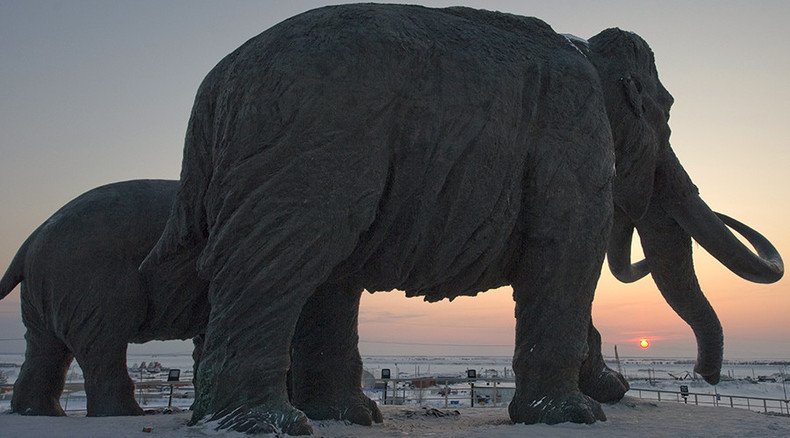Humans or Climate Change: So who killed mammoths and other biggies?

Two recent studies into ancient animal extinction appear to diametrically contradict each other, after a new university study claimed it was humans, and not climate change, that caused the demise of mammoths, sabretooth tigers and other ancient species.
This July, research from the University of Adelaide and the University of New South Wales in Australia, published in the journal Science, made headlines for pinning the blame for the disappearance of mammoths and other megafauna on sudden climate shifts.
Now, this week, the universities of Exeter and Cambridge claim that climate change alone was insufficient to cause the extinction; moreover, their new research challenges the notion that ancient humans lived more harmoniously with their surroundings than modern humans do.
The latest study utilized cutting edge statistical analysis which found that, while climate was indeed a factor, humans had been, by far, the most dominant reason for the disappearance of megafauna. Besides mammoths, this category includes woolly rhinos, sabretooth tigers, giant armadillos, and other animals that lived comfortably in their environments up to about 80,000 years ago, before abruptly going extinct at the dawn of the Neolithic Age some 10,000 years ago.
The new research, carried out in concert with the universities of Bristol and Reading, was published in the journal Ecography.
Mammoth step forward? Scientists splice Woolly DNA into elephant cells http://t.co/Bs5gGZnxDppic.twitter.com/kIhb7G6G4O
— RT (@RT_com) March 23, 2015The scientists looked at thousands of various scenarios which all led to humans in the end. They arrived at their results by mapping every possible time period each of the animals is believed to have gone extinct and crossed that with the time humans had arrived on continent or island they inhabited.
“As far as we are concerned, this research is the nail in the coffin of this 50-year debate – humans were the dominant cause of the extinction of megafauna,” Lewis Bartlett of the University of Exeter says.
What the researchers still can’t account for is what drove humans to exterminate the animals at such a rapid pace – habitat destruction, or the need for food and material.
“Our analysis doesn’t differentiate, but we can say that it was caused by human activity more than by climate change. It debunks the myth of early humans living in harmony with nature,” Bartlett adds.
By contrast, the Australian study from late July appears to show that sudden periods of warming were to blame – especially when considering the abrupt disappearance of mammoths 11,000 years ago. This contradicts the view that it was a shift to colder weather that had done them in.
10,000yo ‘Sasha’: World’s 1st baby woolly rhino found in Siberian permafrost http://t.co/UnU1ygvBszpic.twitter.com/hAqV6GYb81
— RT (@RT_com) February 25, 2015“The abrupt warming of the climate caused massive changes to the environment that set the extinction events in motion, but the rise of humans applied the coup de grace to a population that was already under stress,” Professor Chris Turney from the University of New South Wales said in July.
That conclusion was reached as a result of pattern analysis of ancient DNA carried out by the Australian researchers. Global rainfall and vegetation pattern shifts were only exacerbated by human activity, according to the study.
Whichever version of events is actually true, both studies sharply counter the view that humans ever lived in harmony with nature – a conclusion stressed by the Exeter scientists.












